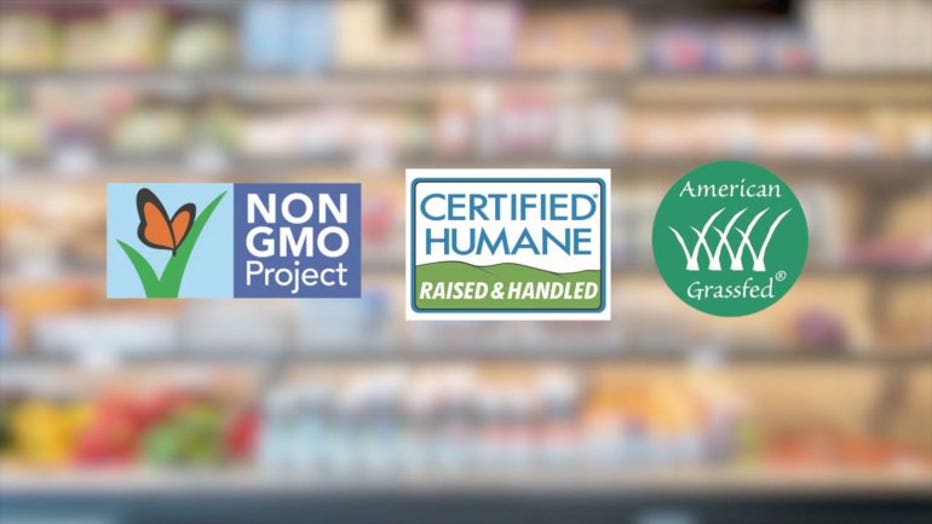Understanding confusing food labels
Grocery shopping can be overwhelming. Foods are often packaged with a dizzying array of labels, sometimes with healthy-sounding buzz words like organic, natural, and cage-free. But how do you know if those labels actually mean anything? Consumer Reports cuts through the confusion to help you focus on the most meaningful food labels.
Consumer Reports says the “Animal Welfare Approved” seal is worth searching out.

A recent guide by Consumer Reports analyzed and rated many of the food-label seals and claims consumers encounter from the farmers market to the supermarket.
It’s hard for consumers to know which ones have a good definition behind them and meet certain standards.

Take, for example, “all-natural,” “pesticide-free,” and “no antibiotics.” In some cases, those labels may be accurate, though shoppers can’t always be sure because the claims aren’t well defined or required to be properly verified. Consumer Reports says a better label to look for is
the USDA Organic seal. It’s backed by federal law and federal regulations that are comprehensive.
Consumer Reports also highly rates seals like “Non-GMO Project Verified,” “Certified Humane Raised and Handled,” and “American Grassfed.”


The bottom line is you might have to do a little homework, but at least you’ll understand what the labels really mean.
Know which ones are meaningful so that your purchasing decisions have the impact you want them to have.
For all the steak and burger lovers, you might want to look for the “American Grassfed” seal. It means the cattle grazed in a pasture and only ate grass their entire life. The animals aren’t treated with antibiotics or growth hormones, and the farms are inspected every 15 months.

All Consumer Reports material Copyright 2019 Consumer Reports, Inc. ALL RIGHTS RESERVED. Consumer Reports is a not-for-profit organization which accepts no advertising. It has no commercial relationship with any advertiser or sponsor on this site. Fo

